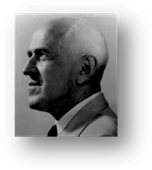SOCIAL CHANGE

Unit Overview
How do you think past societies differ from today’s society? Do societies continually change? Many aspects of society bring about change, and it is an every changing process. Theorists have developed their own points of view about society and its development. In this unit, you will examine how changes in society happen.
Introduction
Social change is a result of significant shifts in patterns of social and cultural behavior. There are over 6 billion people in the world, so tracking and understanding change of each person is extremely difficult. Therefore, sociologists developed a variety of approaches to understand why and how social change takes place.
Traditional
and Modern Societies
Society has changed as the world has changed. They have moved from the traditional way of living to more highly-technological ways of living in the modern world.
Traditional
Societies
Much of society in the developing world is traditional. Agricultural communities base their lives on the rhythmic cycles of nature, such as day and night and the changes seasons of the year. The society functions smoothly through cooperation among the community and spiritual values. Families and ancestors are important. People look to the past for wisdom and do not rely on current experts. Daily work has not changed for generations, and decisions are made based on tradition.
People in these societies do not have a chance to improve their economic status. When they trade goods, it is done on a personal basis. These communities remained unchanged over long periods of time.

Modern
Society
The modern society has moved away from the agricultural mindset to the industrialized focus. This society values efficiency and productivity, and formal organizations, instead of families, dominate. Decision making is based on rational-scientific thinking.
The change from a traditional to a modern society is known as modernization. Some sociologists believe that modernization has taken away society’s traditions, along with people’s feelings of belonging to something larger. Also, people lose their connection with nature. There are examples that defy these problems. India and Japan have undergone significant modernization, but they maintain their cultural and has even strengthened their traditional cultures.
Types
of Social Change
When thinking of social change, several questions come into play:
- What are the differences between the original society and the new, changed society?
- When societies change, do they become more different or more alike?
- What is the difference between changes that occur on a large scale, system-wide and changes that occur on a small scale, but happen rapidly?
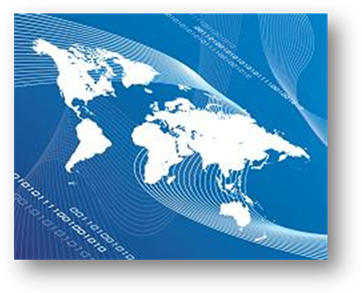
Convergence
or Divergence?
As traditional societies become more industrialized, do they become like modern societies? Two ideas show differing views.
Convergence
Convergence is the belief that one day we will become a global society. Modernization will erase cultural difference, so societies come together to become one. Major changes in technology affect norms and values. Also, when non-Western cultures become exposed to lifestyles and the technology of Western societies, they adopt Western values. Leaders in developing countries who see the advantages of technology will gain economic advantages and will become the new “elite.”
Divergence
Divergence is the belief that the conflict between Western cultures and non-Western cultures is growing. Some theorists believe that modernization will not erase cultural differences. Some Muslim societies make sure that they protect their culture from Western society. For example, in Saudi Arabia, movies and dancing are forbidden, and Western publications are censored. Islamic law is strictly enforced. Other countries reject the idea of a global village and see the incursion of Western theme parks and fast-food chains as a form of cultural imperialism. However, societies which are not opposed to Western ideas have modernized yet have kept their culture, such as South Korea and Taiwan. Their societies vary greatly from the U.S.
Macro
versus Micro Social Change
Macro changes are changes which occur to an entire society. The changes occur slowly over time and cause a movement from a simple society to a more complex one. Examples include industrialization, modernization, the change from an industrial economy to an informational and services economy, and the change from hunter-gatherer societies to agricultural societies.
On the other hand, micro changes include those which occur within small social institutions like families or businesses. The changes occur on a day-to-day basis and may seem small and insignificant. However, the changes do accumulate and end up affecting society as a whole. An example is the use of personal computers (PCs). Computer use started very slowly back in the 1970s. Today, in the Western world, computer use is very widespread. It is difficult for someone to not use products that are computer controlled.
Change can both be exciting and scary. All societies experience change; they change at their own pace and in their own way. When changes take place, societies look toward the future. A society’s culture, tradition, and institutions control the degree of social changes that take place. In countries where there is freedom and democracy, such as the United States, social movements develop more easily than in countries where it is dangerous to speak out against the government or people of importance.
Theories
of Social Change
Theories have been developed regarding macro-changes in society. The theories explain how and why social change occurs.
Functionalist
Perspective
Functionalists believe that society change takes place in order to maintain harmony. Society changes and adapts in whatever way is needed to maintain balance and stay on course. The changes take place over time. There are three different metaphors that functionalists use to explain these changes, Functionalist Evolution, Cyclical Theory, and Equilibrium Theory.
Functionalist Evolution
Sociologists believe that society goes through stages that progress from simple
to complex. Influenced by Darwin’s
theory of evolution, they see change as a nonlinear process, meaning that
progress in one direction occurs in stages such as savagery, barbarism, and
civilization.
Auguste
Comte
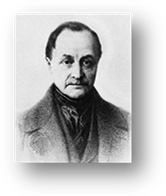
Auguste Comte referred to three stages of development.
|
Theological |
Society is governed by spiritual explanations and such beliefs as the divine right of kings; answers are found in the supernatural. |
|
Metaphysical |
Ideas such as the equality of people, social contract, and popular sovereignty explain people’s relationship to government; answers are found in philosophy or religion. |
|
Positivist |
People take a scientific approach to political organization. Comte imagined that the ultimate government would be the method of science to improve human conditions and solve human problems. He saw this stage as the most evolved state; it is the ultimate stage of human development. |
Herbert
Spencer
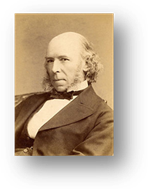
Herbert Spencer believed that societies, like living organisms, evolve from simple to complex due to the process of natural selection. Societies have to adapt to their changing environments, just like organisms. The strongest societies are meant to survive. He states that industrialized societies were able to adapt to the 19th Century conditions and were more advanced for their time. Spencer believed in the idea that the more civilized and advanced societies had a moral obligation to help the more primitive societies.
Ferdinand Tonnies
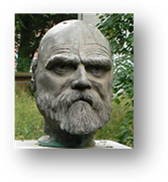
Tonnies was not a proponent of positive effects of industrialization. He believed that industrialization brought people new opportunities and wealth, but on the other hand it brought people a sense of isolation and powerlessness. This could then result in people feeling frustrated and disenchanted with their society, and as a result, the society becomes weaker.
Emile Durkheim
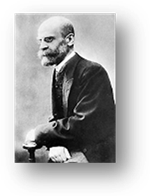
Durkheim argued that economic competition can lead to chaos. He said the preindustrial societies are held together by mechanical solidarity, meaning they share the same values and perform the same tasks. The commonness makes them united. As the division of labor becomes more complex, societies develop organic solidarity, where social relationships become impersonal because of increased job specialization, where people can no longer meet all their own needs and rely on others for survival. As a result, social relationships become based on need rather than values.
Neo-Evolutionists
Neo-Evolutionists do not see society’s changes as step-by-step progressions, but more complex. They argue that the level of social complexity increases with the degree of social differentiation. Social differentiation refers to the separation of social institutes, particularly when politics, family, economy and religion become more separate, individual entities then society becomes more complex.
Neo-evolutionists also believe that there is no state or part of society that is superior to others. They also believe that change does not necessarily mean improvement.
Gerhard and Jean Lenski, social scientists, believe that social change takes place and evolves because of changes that take place in a society’s economic base and its level of technology. Improvements of old technologies and the development of new technologies enable societies to change. Other external factors which allow changes in society include population changes and the development of new ideologies.
Cyclical Theory
The Cyclical Theory of social change is similar to the stages of life. Social change goes through stages of development, or cycles, and does not move in a straight line. Change is part of a continuing process. Three theorists evolved as leaders in this area.
Oswald
Spengler
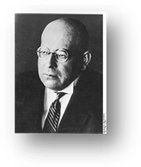
Oswald Spengler was a German historian who was very troubled about the state of society after World War I. He questioned whether change brought about progress. He wrote The Decline of the West to discuss his views. He saw societies like organisms, where they go through cycles of birth/childhood, adolescence, maturity/adulthood, and old age/death. He found examples to support his ideas in the decline and fall of the great empires of Rome, Greece, and Egypt. His work was influential with other theorists.
Arnold
Toynbee
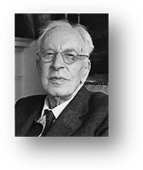
Arnold Toynbee, a British historian, agreed with the idea of the rise and fall of societies, but did not feel that these movements were a part of natural societies. His view held that environmental challenges led to social change. People’s reactions to the challenges influenced the direction in which society moved. Toynbee believed that the severity of the challenge is very important as well. For example, when there is plenty of food is available, the challenge is mild. When this happens, people become complacent, and the state of civilization declines. On the other hand, when food is scarce, a civilization is either destroyed or strengthened. He believed that the greatest stimulation of growth and change comes when there are moderate challenges in a society. Toynbee’s theory helps us learn about past events.
Pitrim
Sorokin
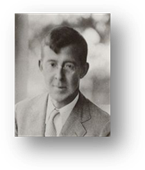
Pitrim Sorokin, a Russian sociologist, believed that all societies fluctuate between two opposing forms of culture. His ideas are similar to traditional and modern society and to the theological and positivist vies of Comte. He developed two forms of culture. First, the ideational culture, where faith or religion is the source of knowledge, and people value spiritual life. The second is the sensate culture, people value practical and materialistic life, and scientific evidence is the source of knowledge.
Sorokin also introduced the concept of the principle of immediate change, which is the idea that a shift from one form of culture to another occurs when influential forces develop within the society itself. His idea is also applicable to past events.
Equilibrium Theory
The beliefs that are part of the Equilibrium Theory are the opposite of the other theories since it does not view society change as linear or cyclical, but rather as a result of an effort to keep society in balance. Talcott Parsons developed the equilibrium theory of social change. He argued that changes in one part of a system produce changes in all of the other parts of the system. Systems are interdependent, and the change helps maintain the equilibrium of a society. Parsons did not believe that society changes from one extreme to the other, and it does not move through social changes. Society is constantly seeking balance. For example, with the costs of living increasing, a family changes from a one-parent employed mode to both parents working. This affects the children and a need for more childcare. Also, the government now provides different services and tax benefits for the family. People are critical of this theory since it does not explain revolutionary change, and it creates the idea that societies are more stable and harmonious then they are in reality.
Conflict
Perspective
Conflict theorists look at the role of conflict, tension, and strain as sources of social change. A leader of this theory is Karl Marx.
Karl
Marx
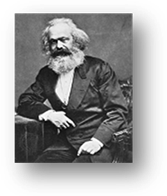
Karl Marx viewed social change as a result of the powerless trying to overthrow the powerful. He did agree with some thoughts of functionalists. He agreed that societal changes are linear, proceeding in one direction. He also agreed that societies need to adapt to change in order to survive. Lastly, he agreed that societies move from simple to complex, or from a class to a classless society. He developed the following stages to reach a classless society.
|
Classes |
Society becomes highly divided into workers and the elite. |
|
Conflict |
When workers have feelings of resentment and frustration with their employers, they revolt. |
|
Synthesis |
A new power arrangement replaces the old. |
|
Time passes. |
|
|
Classless Society |
The first three processes repeat until over time, a new, ideal classless society forms. |
Interactionist
Perspective
Interactionist Perspective theorists look at the end result of changes in society. They want to see how the changes affect people’s self images and social interactions.
Traditional
Societies versus Modern Societies
Traditional societies are based on primary groups, so people’s roles are based on their family, ancestors, and societies’ collective needs. People interact in informal and natural ways since the focus is not on gaining power and wealth.
Modern societies differ greatly from traditional ones. The fundamental value is individual achievement, and people need to develop their own roles. People may lose their self-confidence since there is the element of uncertainty. Their interactions with people outside of their family and close friends are more formal and tentative.
The change to an informational based society from an industrial based society raised identity issues and created new ways of interaction. New tools of interaction like computers and the Internet are of much interest to interactionist sociologists. Communication becomes international, and it crosses age, groups, gender, and social class barriers since we cannot see the people we chat with or e-mail. New symbols are also added to our language. These tools break down social barriers. One barrier that will exist is the economical aspect that keeps people from having access to the tools.
Wrapping
Up Views of Social Change
To wrap up the differing views of social change, review the following oints of comparison regarding ideas about social change.
- Functionalist theories focus on stability, but ignore conflict.
- Conflict theorists look solely at economic strain, and ignore factors like technology.
- Cyclical theories work well for Western societies, but not in societies in other parts of the world.
- Evolutionary theory does not help us understand internal social changes like political changes.
- Interactionist theory gives us help in understanding macro changes.
Causes
of Social Change
There are a variety of factors that influence change. Natural disasters, technological change, and economic factors all affect change on society. Let’s look at some of these factors.

The
Physical Environment
Much of the culture of society as well as economics is affected by geography. Society must respond to any changes that occur to the environment. Hurricanes, floods, tornados, and earthquakes all have the potential to destroy the economy of a society. Some cities are destroyed. Those such as the Greco-Roman city of Pompeii, have been eliminated by natural disaster. Look at the disastrous effects of Hurricane Katrina on New Orleans in 2005 shown in the PBS slideshow Hurricane Katrina’s Aftermath. You can also read reports about the economic impact, rebuilding, the environmental effects, liability issues, and infrastructure reconstruction by clicking the Additional Features links on the right side of the PBS page.

Some people believe in the idea of global warming. If it happens as some believe, then the Earth’s atmosphere will warm significantly and melt polar ice, which will raise sea levels, destroying coastal communities. It could also destroy natural habitat, so some species will be destroyed. Temperature changes will change precipitation and growing seasons. These types of changes affect food trade and the trade of other resources. As a result the population of the entire planet will be affected, not just certain communities or societies.
Population
Changes
There are four main demographic events that can lead to change in the population.
- Loss of Population: When a population decreases in size or grows too slowly, a society is affected because there too few workers to perform the necessary jobs. For example, in Montana there are few technology based jobs. College graduates in the technology field move out of state because jobs are not available. As a result, communities do not attract many businesses, because they do not have the skilled work force to fill the jobs.
- Population Growth: Population growth can have a very positive effect on a society, depending on the wealth and resources of the community. It can lead to growth and prosperity and rapid social improvements. For example, during the 1940s, the U.S. experienced a baby boom, which lead to improvements in educational facilities. On the other hand, Bangladesh experienced a rapid population growth and was unable to provide enough food resources, causing millions of people to suffer starvation.
- Migration: The movement of people forces changes in social institutions. For instance, Mexican families have immigrated to the United States in order to find work. This has led to pressures on schools and has challenged norms regarding the status and rights of illegal aliens. For example, the question of whether or not to grant driver’s licenses to illegal immigrants is debated. It becomes a choice of public safety versus immigration laws.
- Age Distribution Change: Social programs are affected when there is an increase in the number of younger or older people in society. For instance, in the United States, the aging population is growing, which is causing a strain on Social Security and health care.
Social
Structure
Social change can be a result of conflict among competing
numbers in society. For example, the
conflicts between social classes lead the revolutionary wars of
In the United States, a social structure that included slaves became one argument over which the Civil War was fought. Major social change was a result; slaves became free, and they, along with their descendents, moved into the mainstream of society.
Other changes that were a result of conflict between groups from different parts of the social structure included the Civil Rights Movement and the Women’s Suffrage Movement.
The
Role of Technology
Technology has come some far since such early inventions like the wheel, the discovery of electricity, and the development of televisions. An invention that transformed society is the invention of the automobile. It helped people find jobs further away from home and it helped people develop social relationships with people they might have never met. Other inventions that led to pervasive social change include the printing press, the telephone, the steam engine, the cotton gin, electricity, airplanes, television, computers, cameras and the assembly line.

New technologies in genetic engineering, biotechnology, wireless communication, and electronics provide more high-impact changes. Potential changes range from the ability to feed more people and improve health to having a society where corporations know the brand name preferences of every citizen and governmental agencies know their whereabouts at all times.
Modernization and Economic Development
With modernization comes economic development. In developing countries where modernization is ongoing, so is the development of economics. A variety of theorists have tried to explain what is needed for the process to work successfully.
|
Dependency Theorists |
Dependency theorists conclude that industrialized communities around the world need to take responsibility and help developing countries improve their conditions. They believe that the success of industrialized countries comes at the expense of poorer countries. They believe that industrialized countries use the resources of and produce products in poorer countries to take advantage of cheap labor. |
|
Modernization Theorists |
Modernization theorists believe that in order for a country to change from a developing country to a modern country, the country needs to have democratic institutions, money for development, and an economic system that encourages personal gain among its citizens. All these aspects are missing in developing countries. |
|
Marxists Theorists |
Marxist theorists focus on the class structure of developing countries and the distribution of resources by the ruling class. Often, the ruling class uses a community’s resources for personal gain. As a result, when the resources of a country are not used properly, the society stagnates and is unable to modernize. |
Human
Action
People, either as individuals or in groups, affect social change. Some individuals who have affected social change include Julius Caesar, Karl Marx, Martin Luther King, Jr., Adolph Hitler, and Harriet Beecher Stowe, among others. In addition to the individual effort of those seeking change, the social and cultural environments played factors as well. For example, American patriot Patrick Henry reached people’s emotions when he stated “Give me liberty or give me death!” At that time, the colonies were in disagreement and were about to engage in war. Therefore, his words helped him change society since other societal factors were occurring at the same time.
Social movements are major proponents of social change. Revolutions, activisms on local issues, and collective actions bring change to society.
The
Processes of Social Change
William Ogburn was a sociologist who developed three purposes in producing changes.
|
|
Invention |
Existing elements of a society combine to develop new ones. Inventions are not just technological. For instance social inventions include bureaucracies and corporations. |
|
Discovery |
This involves a new way of viewing reality. Discovery can bring social change only when other conditions are right. For example, Viking Leif Eriksson, discovered the North American continent 500 years before Christopher Columbus. However, Viking settlements did not flourish and the native population remained the same. The rest of Europe never realized his discovery. However, when Christopher Columbus reached North America, he encouraged The Columbian Exchange, a widespread exchange of plants, animals, food, human populations between the Western and Eastern hemispheres. |
|
|
Diffusion |
Diffusion is the spread of an invention or discovery throughout society. It also includes the spread of ideas, values, and social institutions. Ogburn believed that technology changes much more quickly than cultural and social institutions. He called this the cultural lag. For example, when computers became mainstreamed in society, they were utilized in the social institution of education. Educators quickly put computers into schools. However, early lessons with computers mirrored early education. Computer education involved drill and practice and programming, like early education. It did not include lessons of exploration, interactive projects, or software programs, which reflect current trends in education. |
The
Future is Now
The world around us is constantly changing socially. Ethnic conflicts, environmental movements, and unrest in the world all prove that there is ongoing change in the world.
As societies become more modern, people desire more and more individual rights. They demand things like civil rights, human rights, victims’ rights, children’s rights, criminals’ rights, the rights of the unborn, the right to strike, the right to free speech, the right to privacy, and the right to own certain weapons.
When thinking about rights, it is important to discuss the responsibilities of individuals to their communities, to their countries, and to future generations. The choices that people make today definitely influence the future. There are four different roles in social change.
Supporters: These people are very active in social movements, from being leaders to being volunteers of service. They engage in activities like letter writing, fund raising, and making contributions.
Resisters: These people oppose changes that threaten their present sense of security or violate their value systems. They engage in activities similar to supporters.
Passives: They do not have an interest in change; however, they do not actively fight it either. They are content, satisfied with society as it is, and they ignore any processes of change that is happening around them.
Adaptives: They are indifferent to change and do not have strong support or strong resistance for it. However, they are different then passives because they do not ignore change. Instead, they adapt to change and go with the flow.
Some people will not become involved in social change unless they suffer a direct attack on their values or an event which threatens their personal sense of well-being. Other people take a global view of change, because they have a well-developed social conscience. They recognize their role in the larger society and are eager to get involved, even when they will not get personal gain.
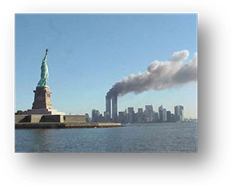
Activity
The United States experienced many social changes as a result of the terrorist attacks of September 11. One web author states the following.
Terrorist attacks on
and since September 11th have stimulated public soul-searching, military and
diplomatic responses, and efforts to reform public policy. Both the attacks and responses to them have
raised a host of questions about social organization, basic social
institutions, how people mobilize amid crises, and how differences of culture
and politics shape conflict and cooperation.
Your assignment is to explore the ways that our country has changed since 9/11. You might investigate changes in people’s thinking, travel restrictions, security measures, and other social issues. You may use the websites and video clip listed below, and you may conduct your own online research about this topic.
After Sept. 11: Essays on Globalization
Encyclopedia
Britannica: September 11
If you are prompted for a username and
password, use the username vla and
the password student.
![]() National Security and Civil Liberties: The War on Terror (2:44)
National Security and Civil Liberties: The War on Terror (2:44)
If you choose to use additional websites, books, magazines, or other sources for your research, you will need to send a list of those sources to your teacher. You will do this in the questions section of this unit. Be sure to keep a list of your sources as you find them.
Share
Your Findings
To complete this activity, you will need to have Adobe Acrobat Reader version 8 or higher installed on your computer. This is a free download. If you need to download Acrobat Reader, click the button below.
As you are researching the effects of September 11 on the United States, you will be completing a table to share your findings. The table has been created for you. Start by downloading a copy of the September 11 Table. Save the file on your computer’s desktop or in another location that is easy to find.
The September 11 Table is an editable file, meaning that you can click in any of the blue boxes to enter your information. Notice that the text size automatically adjusts as you type, making the text smaller as you fill the box. You will need to summarize your findings so that the answers you type are not too long. You need to keep the text a readable size for your teacher.
The first two pages of the table form are required. They contain enough table space to list 8
areas of change. If you wish to include
additional areas, a third page is included in the file. The third page is not required.
As you are completing the table, you should save periodically. Once you have completed the table, you will
be attaching the file to the last question in the questions section of this
unit.
|
|
Now stop and answer
questions 1 through 25. |
